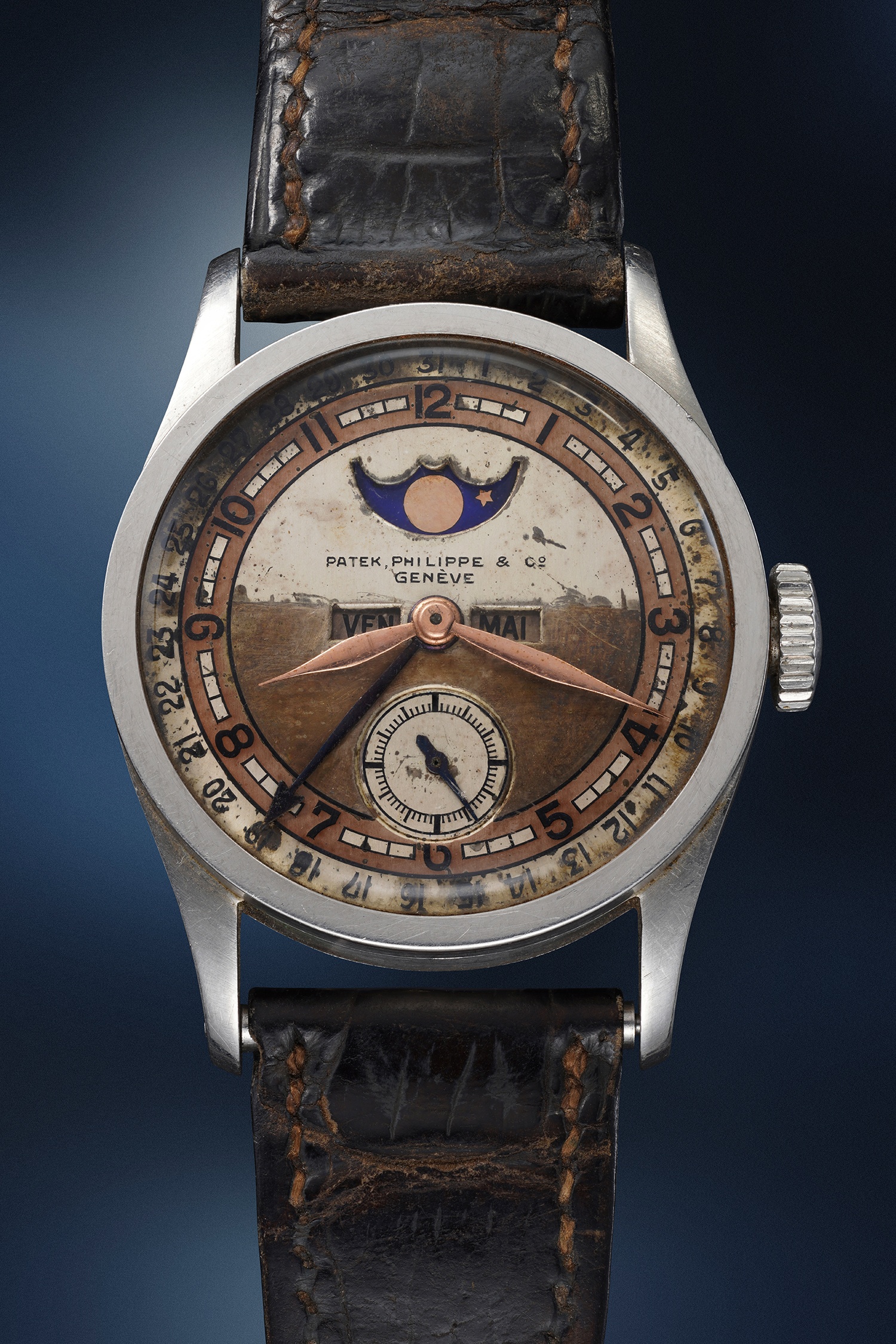


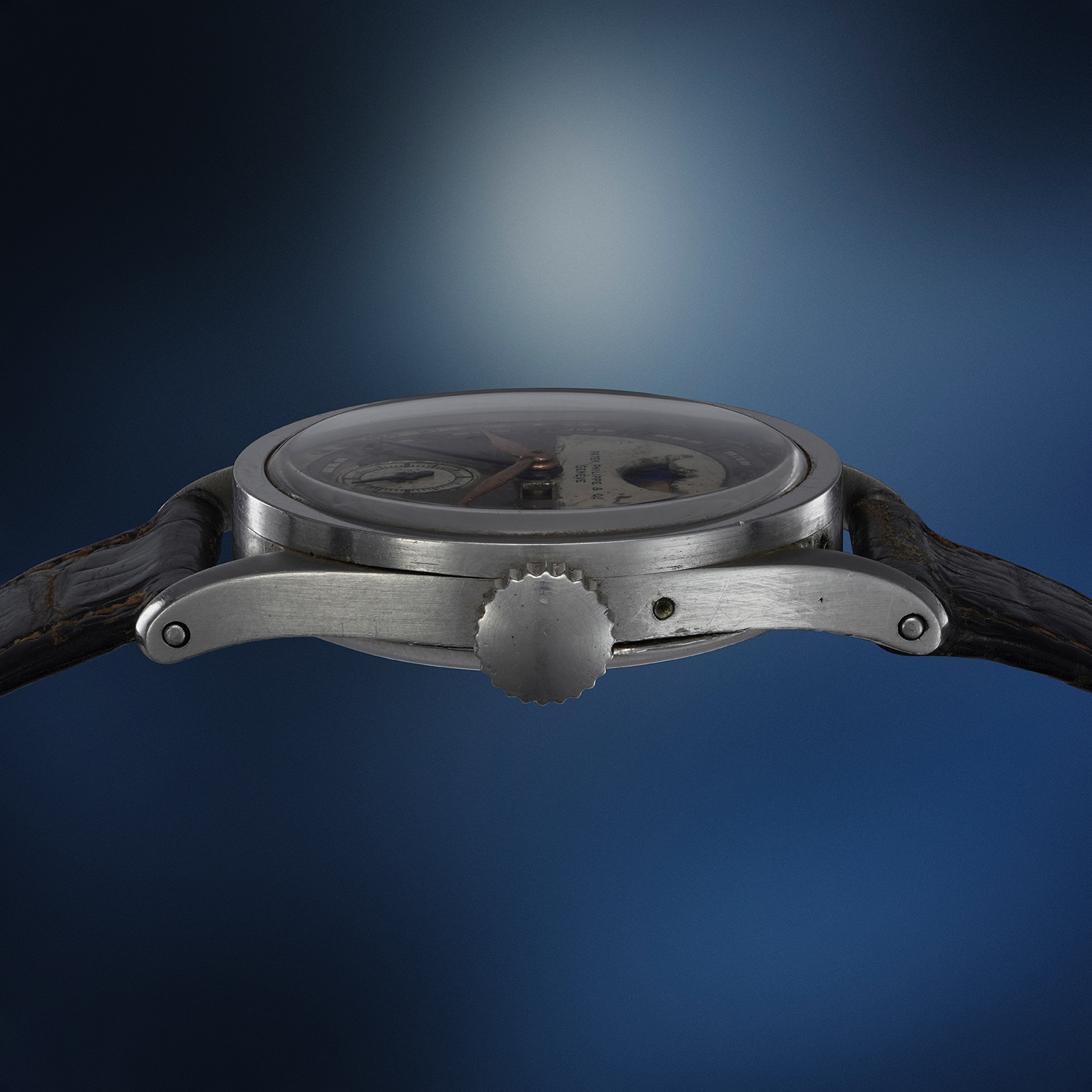
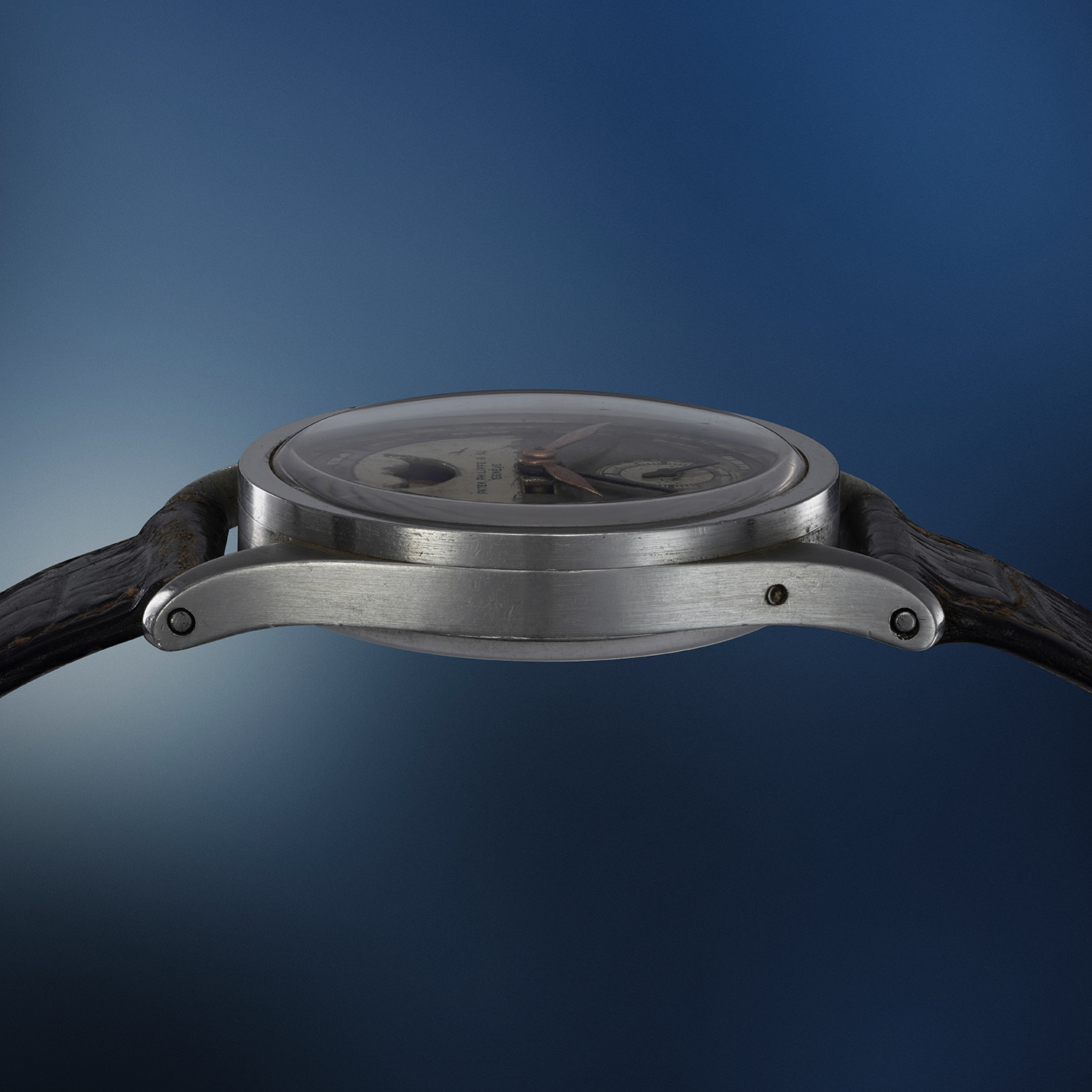
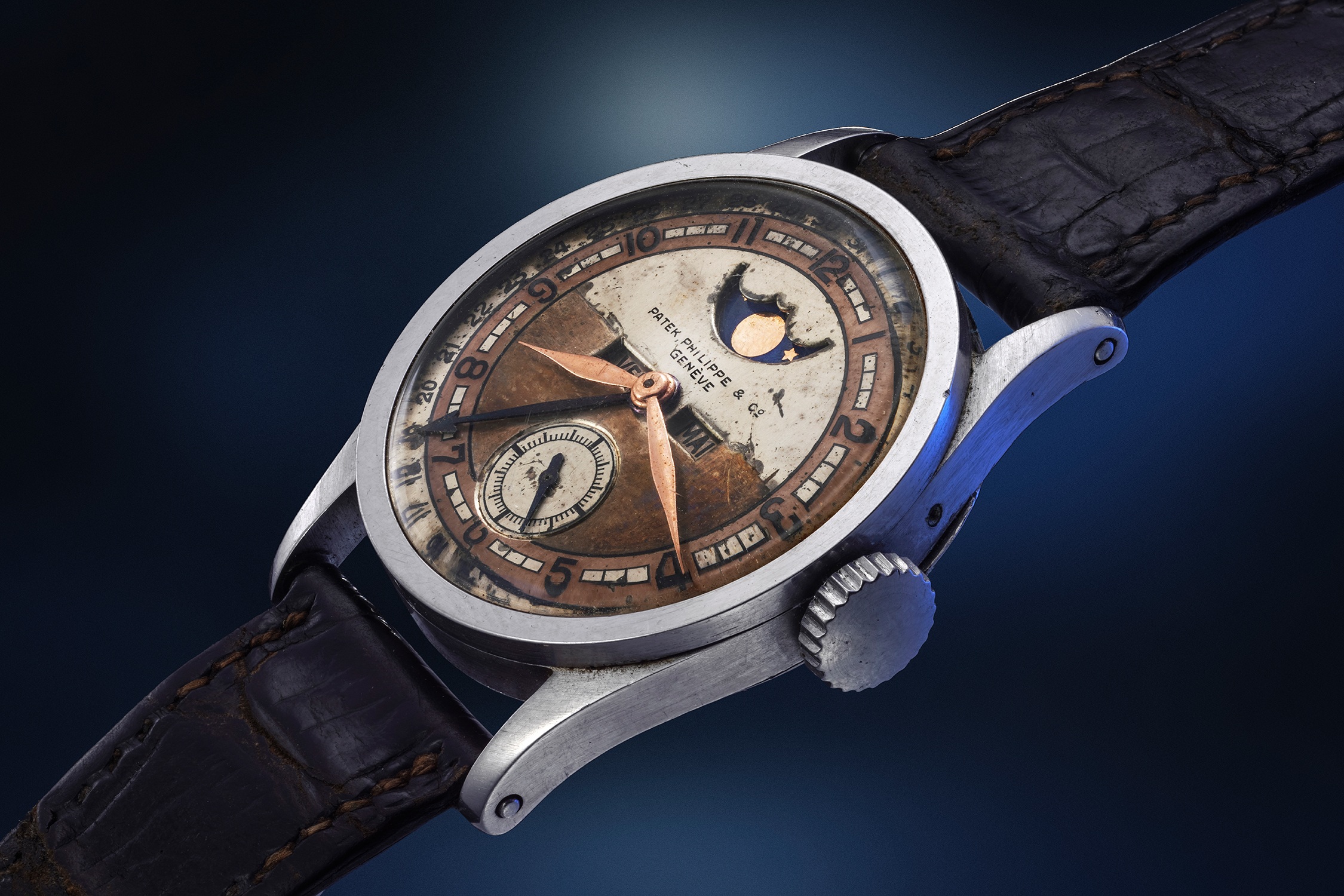



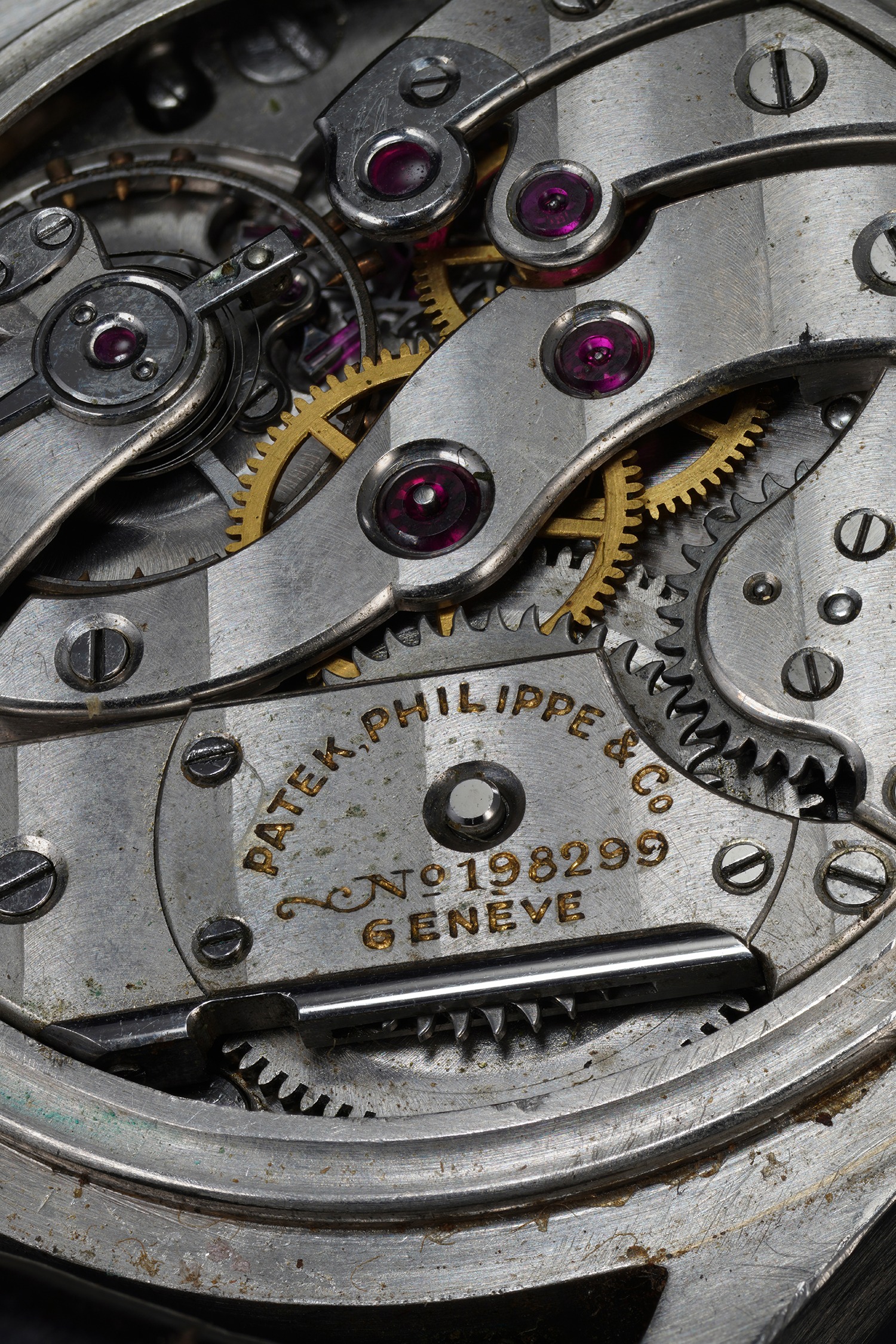
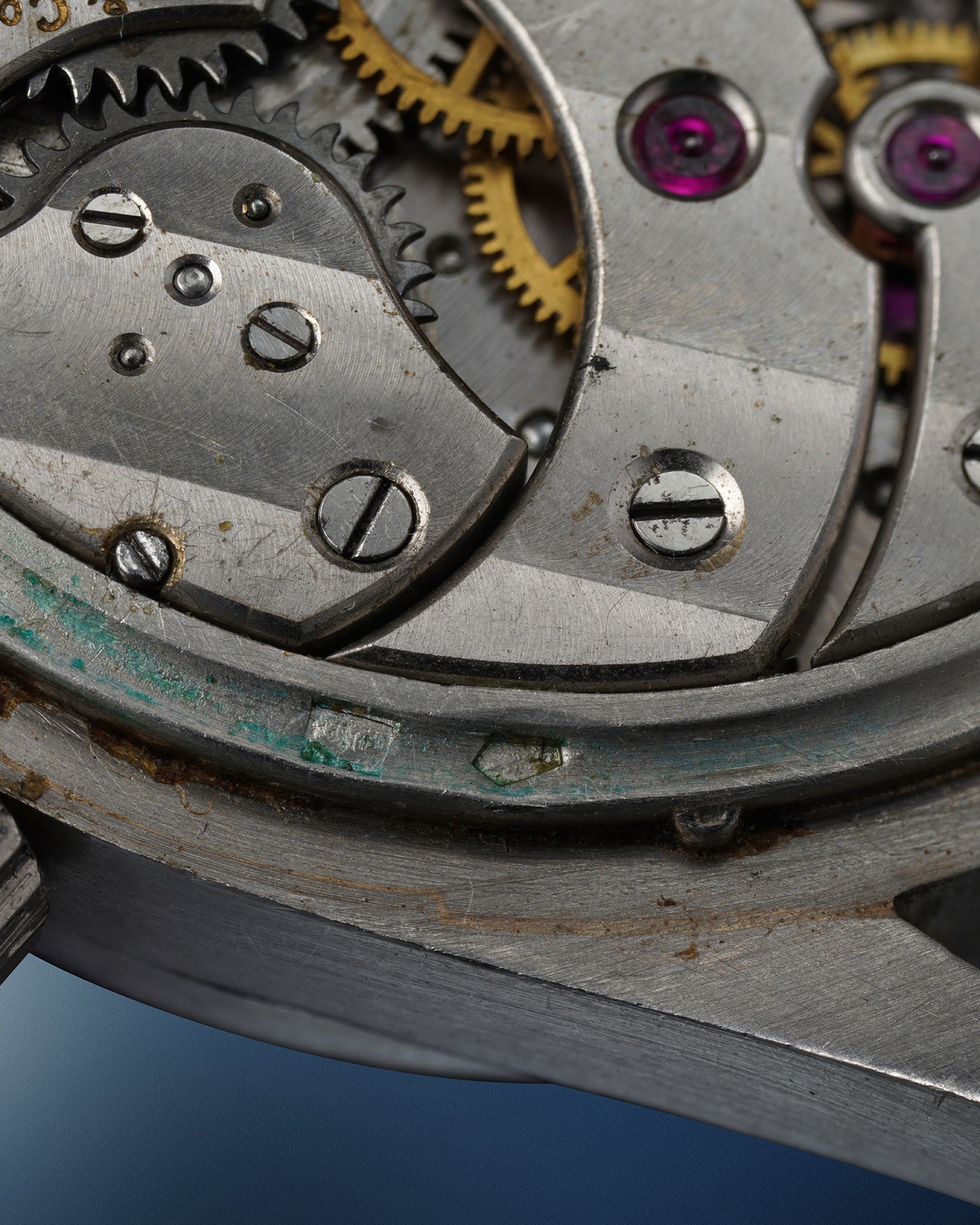

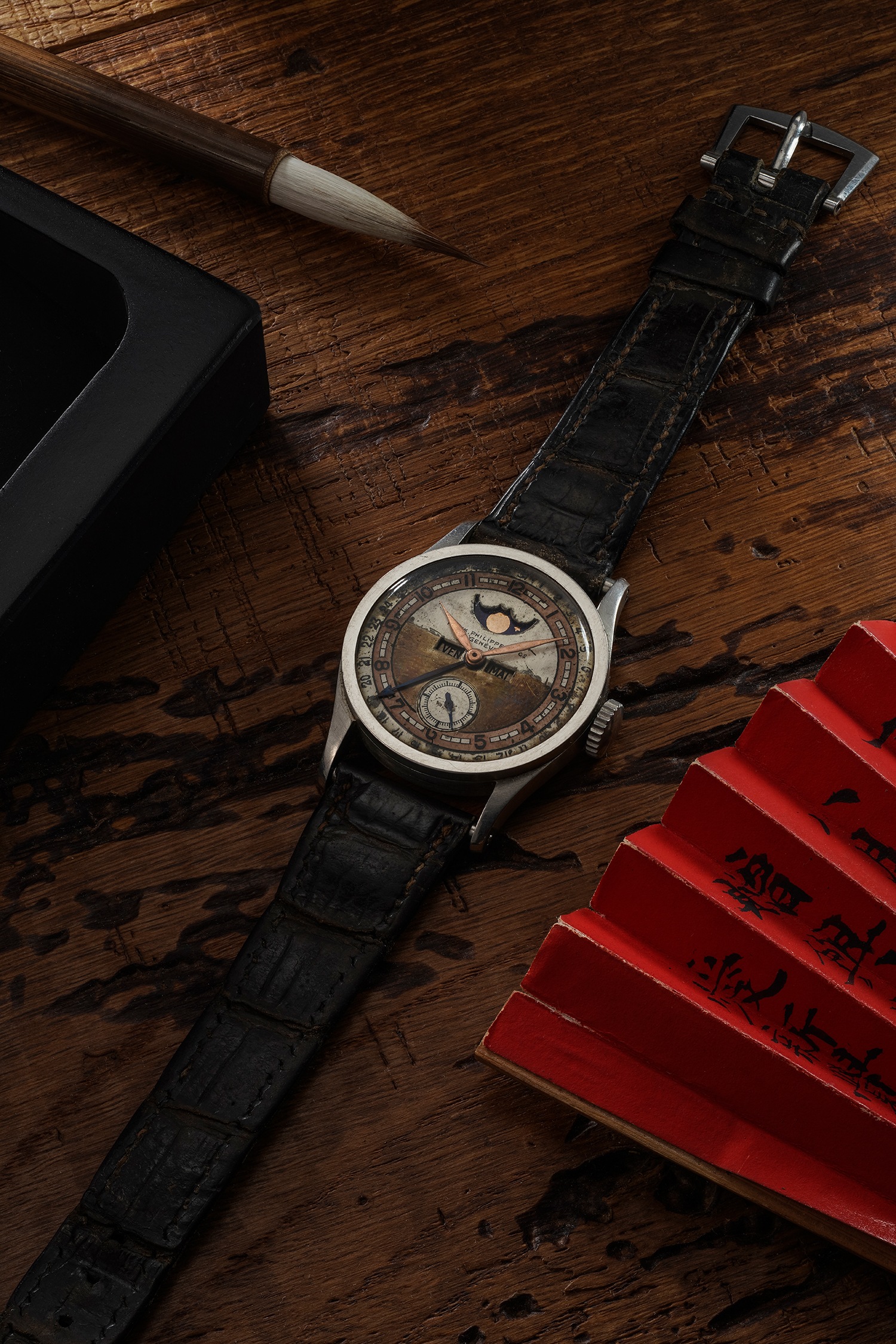

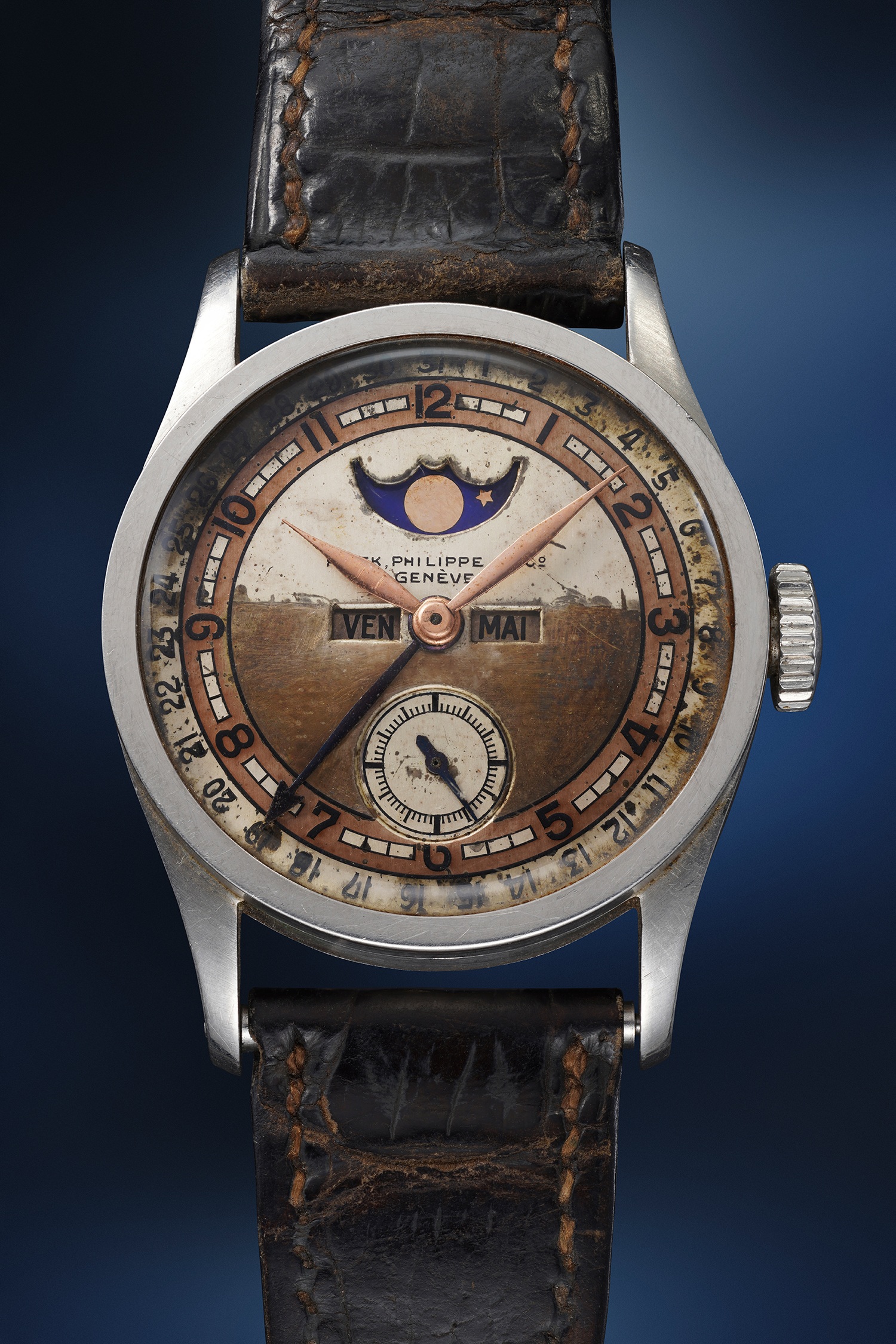
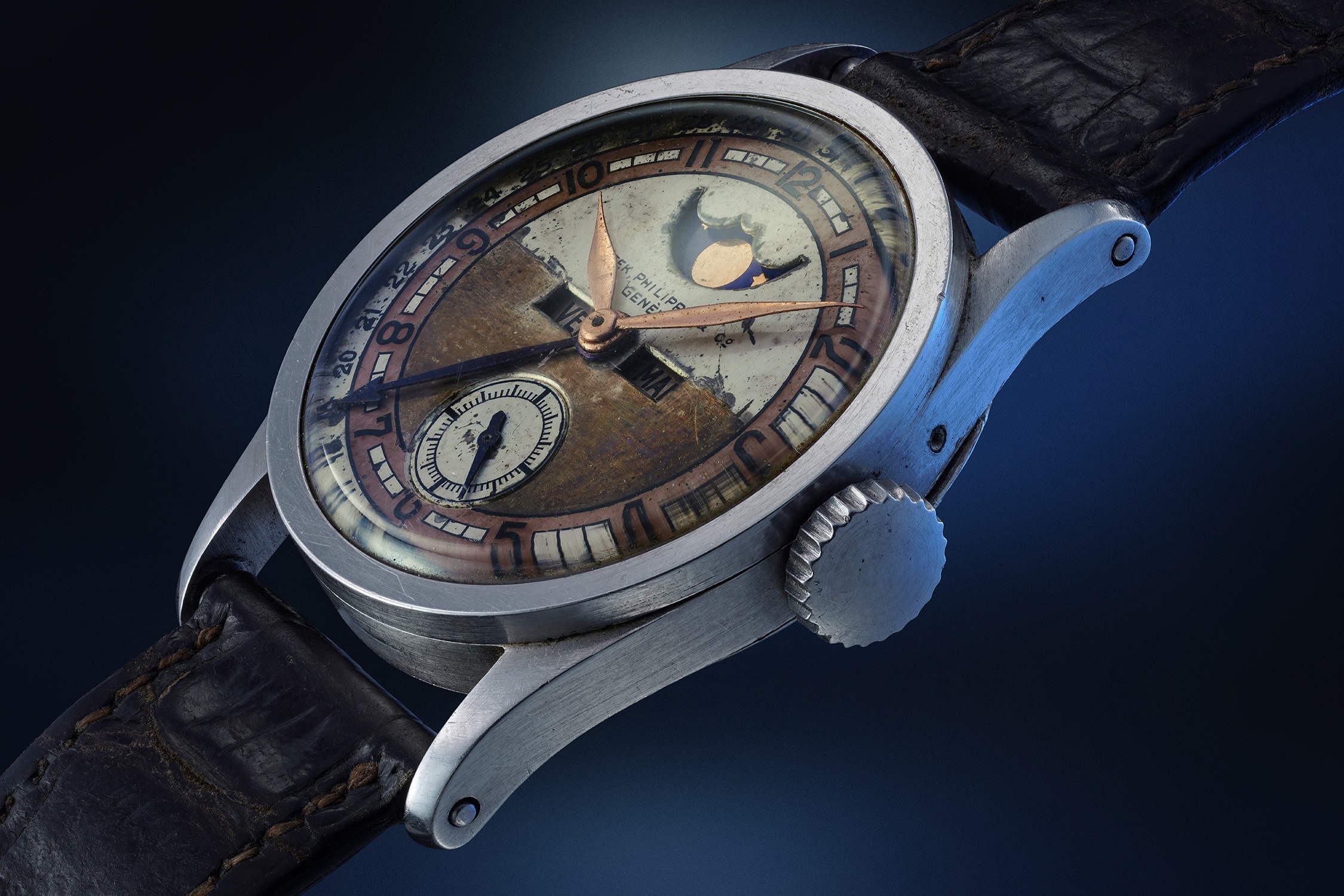
















PLEASE NOTE, THIS LOT IS A PREMIUM LOT. TO BID ON THE LOT YOU MUST COMPLETE AND SATISFY OUR PREMIUM LOT PRE-REGISTRATION PROCEDURE NO LATER THAN 24 HOURS BEFORE THE START OF THE AUCTION SESSION IN WHICH IT IS OFFERED. PLEASE ALSO NOTE THAT ALL BIDDERS MUST PLACE BIDS IN PERSON, VIA ABSENTEE BID, OR BY TELEPHONE. PLEASE CONTACT THE DEPARTMENT FOR DETAILS.
3Σ✱
Patek Philippe
Ref. 96QL
Calatrava
An exceedingly prestigious, historically important and previously unknown platinum triple date wristwatch with small seconds, moon phases, roulette-dial, enamel Arabic numerals, pink gold Feuille hands, former property of the last Emperor of the Qing Dynasty, Aisin-Gioro Puyi
Further Details
Full-Cataloguing
Patek Philippe
Swiss | 1839Since its founding in 1839, this famous Geneva-based firm has been surprising its clientele with superbly crafted timepieces fitted with watchmaking's most prestigious complications. Traditional and conservative designs are found across Patek Philippe's watches made throughout their history — the utmost in understated elegance.
Well-known for the Graves Supercomplication — a highly complicated pocket watch that was the world’s most complicated watch for 50 years — this family-owned brand has earned a reputation of excellence around the world. Patek's complicated vintage watches hold the highest number of world records for results achieved at auction compared with any other brand. For collectors, key models include the reference 1518, the world's first serially produced perpetual calendar chronograph, and its successor, the reference 2499. Other famous models include perpetual calendars such as the ref. 1526, ref. 3448 and 3450, chronographs such as the reference 130, 530 and 1463, as well as reference 1436 and 1563 split seconds chronographs. Patek is also well-known for their classically styled, time-only "Calatrava" dress watches, and the "Nautilus," an iconic luxury sports watch first introduced in 1976 as the reference 3700 that is still in production today.